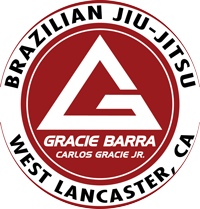How Brazilian Jiu-Jitsu Stands Out Against Other Martial Arts

There are several types of martial arts that are practiced worldwide, and each one has its own story of how it came to be, including Gracie Jiu-Jitsu. Brazilian Jiu-Jitsu is a form of martial arts that uses groundwork and submissions to take down opponents. This method is very successful in neutralizing threats when the opponent is larger or stronger.
While there are other effective martial arts that focus on strikes like Muay Thai and Tae Kwon Do, the “gentle art” of Jiu-Jitsu is an extremely popular choice. People choose this martial art, not just because it favors the “little guy”, but also due to its rich history and values. Grandmaster Carlos Gracie adopted this fighting style and created a strong legacy that continues to thrive.
The Evolution of Jiu-Jitsu
Modern Brazilian Jiu-Jitsu has a rich history that can be traced far back to monks and samurais under different names and variations. You can find a deep dive into the origins of the martial art form from Gracie Barra’s heritage that starts around 2000BC. Though variations of the art can be dated back to Buddhist monks, the Gracie style of Brazilian Jiu-Jitsu starts with a man named, Mitsuyo Maeda.
Mitsuyo Maeda
Maeda is a Japanese martial artist who specialized in a ground fighting style that would later become Jiu-Jitsu. Maeda fought around the world, spreading the martial arts style through demonstrations and wrestling matches. During his travels he landed in Brazil where he took on Carlos Gracie as a student.
Though the training only continued for a few years, Carlos Gracie learned many valuable techniques and lessons that he applied to his life and community.
Gracie Jiu-Jitsu
After his time with Mitsuyo Maeda, Carlos Gracie passed on his knowledge to his brothers. The family would produce several well-known fighters that excelled in the martial art. Some of those fighters include Helio Gracie, Carlson Grace, and Rolls Gracie.
Other Martial Arts
There are over 100 martial art forms, some more known than others, but all focus on self-defense. Each form has a unique origin, and many can be seen demonstrated in mixed martial arts competitions. Some of these styles are seen less in competitions and more in real life situations like Krav Maga.
This self-defense system is a guerilla fighting style derived from Israel. It’s often used by military personnel during close combat. Other forms of martial arts focus more on contact combat like karate that uses both strikes and weapons. Several of these fighting styles can be traced back to Japanese and Chinese origins.
Japanese Martial Arts
Some Japanese martial art forms include Judo, Jujutsu, and Aikido. Judo was the original art that Maeda learned while practicing under Kano, though the term Judo and Jujutsu were used similarly at the time. Jujutsu might be similar in name to what we now know as modern Brazilian Jiu-Jitsu, and is loosely related, but has a few key differences.
Jujutsu focuses on a more traditional take of the art form and never quite made it to Brazil. This form pays a little more attention to throws and joint locks, where Brazilian Jiu-Jitsu gives more attention to grappling and submissions.
Chinese Martial Arts
There are several types of martial arts that have Chinese origins including Tai Chi, Wushu, and Sanda. Many Chinese martial art forms like Kung Fu and Wing Chun use strikes or weapons and practice forms. The biggest difference between Brazilian Jiu-Jitsu and these forms is the use of strikes and weapons.
Jiu-Jitsu and its closely related cousins refrain from strikes and focus in on ground skills. Though all martial arts are combat sports, some focus less combative strategies to neutralize opponents.
The Gracie Barra Difference
The biggest difference between all the martial arts forms mentioned above and Gracie Jiu-Jitsu, is the values that it’s centered around. Gracie Jiu-Jitsu is more than competition and self-defense, it’s a way of life that encourages strong values. This makes the Gracie fighting style stand out not only against other martial art forms, but even other forms of Brazilian Jiu-Jitsu.
Gracie Barra Values
The Gracie Barra Jiu-Jitsu program focuses on Gracie’s values of brotherhood, integrity, and development. Each of these characteristics are needed to succeed both on the mat and in life. The Gracie style openly encourages goal setting, tolerance, honor, tradition, legacy, and so much more.
Benefits of Gracie Jiu-Jitsu
The widely practiced martial art has helped children develop into strong, confident adults that practice discipline and value family in their daily lives. It’s also a great lifestyle for adults to adopt on their journey to get in shape.
These factors make Gracie Jiu-Jitsu one of the best martial arts for both children and adults to learn. Try a free class today in West Lancaster and find out more about how Gracie Jiu-Jitsu can change your life.
